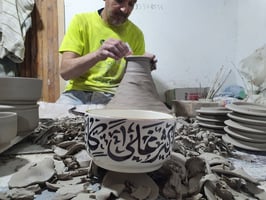Educational programs and workshops play a vital role in preserving Moroccan crafts and passing down...
The impact of tourism on Moroccan handicrafts
Tourism has a significant impact on Moroccan handicrafts, driving demand and providing vital income for artisans across the country. Visitors are often drawn to the rich cultural heritage and unique craftsmanship that Moroccan markets offer, purchasing items such as rugs, pottery, leather goods, and jewelry. This influx of tourists creates a robust market for traditional crafts, encouraging artisans to continue their work and sustain their livelihoods. The exposure to international tourists also helps promote Moroccan crafts globally, showcasing the country’s rich cultural heritage.
The interaction between tourists and artisans often leads to a mutual exchange of ideas and appreciation. Tourists gain insight into the traditional methods and cultural significance of the crafts, while artisans receive feedback and inspiration from diverse perspectives. This exchange can lead to innovations in design and technique, helping Moroccan crafts to evolve and remain relevant. Additionally, tourism provides artisans with the opportunity to expand their businesses and reach new markets, both locally and internationally.
However, the impact of tourism on Moroccan handicrafts also presents challenges. The high demand for souvenirs can sometimes lead to the mass production of lower-quality items, which can undermine the value of traditional craftsmanship. To address this, many artisans and cooperatives focus on maintaining high standards and promoting the authenticity of their products. By emphasizing quality and cultural significance, they ensure that Moroccan handicrafts remain respected and valued. Overall, tourism plays a crucial role in supporting and promoting Moroccan handicrafts, balancing the need for economic sustainability with the preservation of cultural heritage.
-2.gif?width=80&height=80&name=Mf%20(1)-2.gif)


